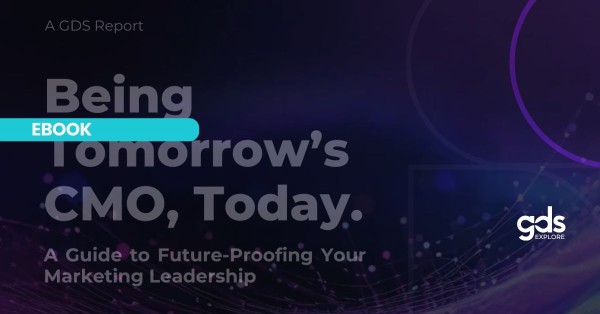CMOs today have an identity problem.
The role of CMO has changed dramatically over the last few years. New responsibilities and challenges have fallen into their laps but rarely has that come with expanded influence within the business.
Instead, CMOs are measured by more metrics than ever but they don’t have immediate control over the resources impacting them. If this sounds like a recipe for friction, you’d be right!
At our recent CMO Insights Summit we brought together leading marketers from across industries to discuss these challenges and establish steps for how CMOs can earn their seat at the table. Here’s what they had to say.
The role of the CMO
Even as recently as five years ago, a marketing leader’s priority list was often no longer than ‘promote our products.’
Now, what it means to be a CMO has changed wildly, exposing a huge grey area for modern marketers.
What a CMO is differs from organization to organization. As such, a modern CMO needs to wear many hats.
Data expert? Brand custodian? Design guru? Creative wizard? Content savant? You name it, there’s a CMO who’s been asked to ‘take ownership’ of it.
“The marketing role has never been more challenging or rewarding.”
– Vildan Oenpeker-Cerci, SVP of Marketing & Innovation NA at Henkel
The challenges of modern marketing
Alongside the growing list of responsibilities falling under the marketing umbrella is an increasingly complex landscape to navigate. To highlight just a few of the hurdles a modern CMO might face:
- It’s impossible to predict consumer behavior or where the customer journey may start.
- Global culture is diverse which has huge implications for marketers trying to reach their audience.
- A brand’s identity, and indeed their entire outward image, is the subject of more scrutiny than ever.
- With more data available than ever, marketers must become the masters of their data estate and be able to use it to make data-driven decisions.
- Sitting at the heart of consumer insights, marketers have the responsibility to use this to influence the business and product.
As marketing teams expand to cover their growing laundry list of responsibilities, it would be logical to expect the CMOs influence to grow as well. Unfortunately, to a board of executives in a tough economic climate, this looks more like a cost sink than anything else.
Overcoming friction
If marketing isn’t represented at the board level, its function is often seen as an expense. From this point of view, when it comes time to tighten the budget, marketing is disproportionately impacted.
To overcome the friction between the executive level and marketing, data is your strongest tool.
“Even for the most talented of marketers, embracing the data driven environment is going to be the only way to get buy-in and executive level influence.”
– Nuno Bamberg, SVP of Brand & Marketing at SleepCountry
For CMOs looking to assert their influence, data is crucial for speaking the language of the business. If there’s a question of cost, use the data to demonstrate value. Identify what metrics align with the business objectives and tailor your data to that end.
Establish your CMO influence
There are innumerable tools and projects modern marketers can jump on to try and develop marketing’s profile within their organizations. That said, it’s no coincidence that most conversations around growing marketing’s influence revolve around their relationship to the wider business and not marketing specifically.
“Establishing marketing as a business driver and not a cost center is the path to executive influence, not tools or initiatives.”
– Seraj Bharwani, Chief Strategy Officer at illumin
Any CMO looking to secure their seat at the table needs to demonstrate that they are business drivers and that can’t be done without data.
We’ll be covering challenges like this and much more at our events throughout the year. Make sure you check out our upcoming CMO Insight Summits for the latest updates and insights for the marketing community.












